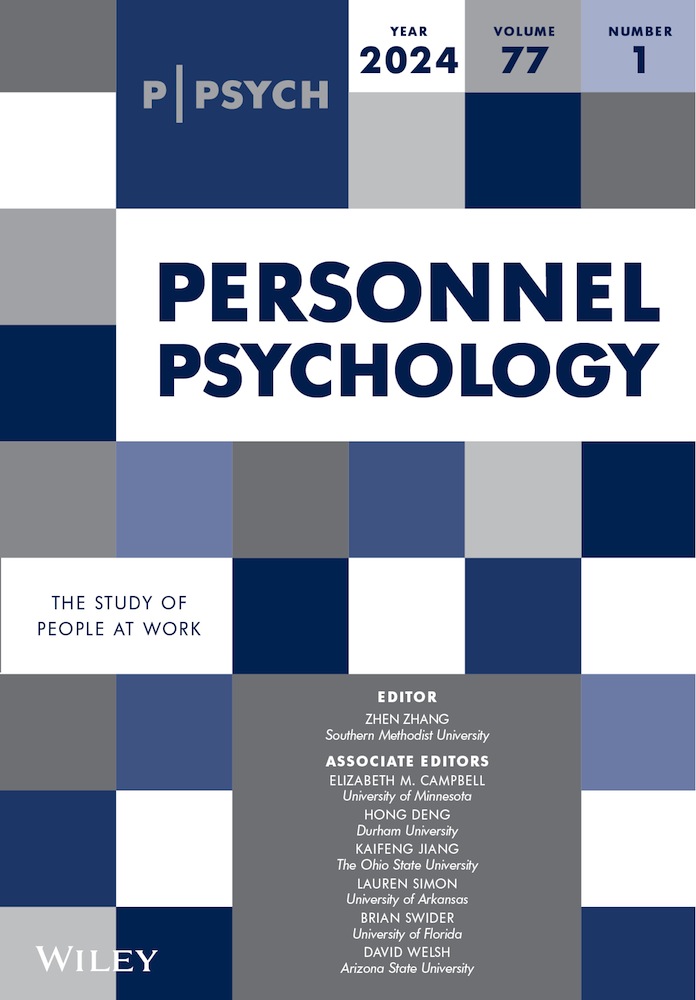A dual pathway model of remote work intensity: A meta‐analysis of its simultaneous positive and negative effects
IF 6.4
2区 心理学
Q1 MANAGEMENT
引用次数: 0
Abstract
As the COVID‐19 pandemic wanes, many organizations are asking employees to return to the office concerned that more extensive remote work could hurt employee morale and productivity. Employees, however, prefer to work remotely because of the flexibility it provides. In light of such competing perspectives, we conducted a meta‐analysis examining remote work intensity's (RWI) effects on employee outcomes. RWI refers to the extensiveness of remote work ranging from one or two days a week to full‐time remote work. We propose a dual pathway model linking RWI to employee outcomes arguing that it has indirect but opposing effects on the same outcomes via two mediators—perceived autonomy and isolation. Findings from a meta‐analysis of RWI's effects based on 108 studies (远程工作强度的双重途径模型:对其正负效应的荟萃分析
随着 COVID-19 大流行的减弱,许多组织要求员工返回办公室,担心更广泛的远程工作可能会损害员工的士气和工作效率。然而,员工却更喜欢远程工作,因为它具有灵活性。鉴于这些相互竞争的观点,我们进行了一项荟萃分析,研究远程工作强度(RWI)对员工工作结果的影响。RWI 指的是远程工作的强度,从每周一两天到全职远程工作不等。我们提出了一个将 RWI 与员工结果联系起来的双路径模型,认为 RWI 通过两个中介--感知到的自主性和隔离性--对相同的结果产生间接但相反的影响。基于 108 项研究(k=110,N=45,288)对远程工作影响的荟萃分析结果支持这一双重途径模型。为了消除组织对远程工作的顾虑,远程工作对员工的工作满意度、组织承诺、组织支持感、主管评价的绩效和离职意向等多种结果都产生了微小但有益的影响。我们还对远程工作使用(RWU)的影响进行了荟萃分析,远程工作使用(RWU)是一个二元结构,具有两种价值--远程工作者(使用者)与办公室工作者(非远程工作使用者)。基于 62 项研究(k=63,N=41,904)的 RWU 元分析结果表明,远程工作人员的工作成果通常优于在办公室工作的同事。总之,研究结果表明,远程工作的好处不多,坏处有限--即使对于那些花更多时间远离办公室工作的人来说也是如此。
本文章由计算机程序翻译,如有差异,请以英文原文为准。
求助全文
约1分钟内获得全文
求助全文
来源期刊

Personnel Psychology
Multiple-
CiteScore
10.20
自引率
5.50%
发文量
57
期刊介绍:
Personnel Psychology publishes applied psychological research on personnel problems facing public and private sector organizations. Articles deal with all human resource topics, including job analysis and competency development, selection and recruitment, training and development, performance and career management, diversity, rewards and recognition, work attitudes and motivation, and leadership.
 求助内容:
求助内容: 应助结果提醒方式:
应助结果提醒方式:


